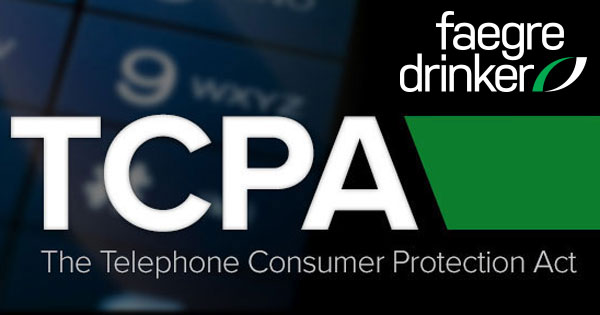After years of discussion and planning, the FCC’s Reassigned Numbers Database opened for commercial use on November 1, 2021. Now business callers can register for a paid subscription with the FCC’s designated Administrator, SomosGov, to query both the connection and permanent disconnection status of over 152 million U.S. telephone numbers through this web-based platform. This information can let subscribing callers know whether customers who had previously given consent to receive calls and texts from the business have disconnected their phone numbers and whether these phone numbers have since been reassigned to others. By reducing the likelihood of unwittingly making calls to unintended recipients, the Reassigned Numbers Database is expected to prevent millions of “unwanted calls intended for someone who previously held their phone number,” which should provide callers some protection against TCPA allegations of calling without adequate prior consent.
Initially adopted in December 2018, the Reassigned Numbers Database proposal and framework underwent many rounds of public comments on various aspects of its implementation, had nearly three years of preparation, and had a three-month beta test. Since April 2021, nonexempt communications service providers have been reporting permanent disconnections to the Reassigned Numbers Database each month, accumulating data about over 152 million U.S. telephone numbers (including toll-free numbers). Smaller communications service providers began reporting their records into the Reassigned Numbers Database on October 15, 2021.
A key feature of the Reassigned Numbers Database is the “safe harbor” protection from TCPA liability if the caller relies on erroneous data in the Reassigned Numbers Database to make calls to numbers that have in fact been reassigned. To benefit from the safe harbor, the caller must be able to demonstrate that it obtained consent from the intended call recipient and verified, using the database prior to placing the call, that the number had not been permanently disconnected (and possibly reassigned) since the date of consent. The caller would rely upon the most-recent version of the Reassigned Numbers Database, which can have a short time lag associated with number reassignment and database updates.
To verify the status of a number before making a call, the caller queries the number in the Reassigned Numbers Database and a date—the later of when the caller obtained consent or when the caller confirmed that the number still belonged to the intended recipient. If the system returns “yes,” the number has been disconnected and possibly has changed subscriber. If the system returns “no,” the number has not been disconnected since the queried date and the caller may rely on this result to call the intended recipient under the safe harbor. If the Reassigned Numbers Database does not have sufficient information, such as if the queried date is before April 2021, the system would return “no data.”
Access to the Reassigned Numbers Database currently is priced in tiers based on the numbers of queries a caller projects it may need to make, month over month. Future changes to pricing will be available on the Reassigned Numbers Database website two weeks before they take effect.
According to the FCC’s webinar on November 1, 2021, highlighting the launch of the database, beta-test database users generally reported positive user experiences. It remains to be seen to what extent this new resource becomes well-accepted and provides callers with certainty in determining whether telephone numbers have been reassigned from the consumers they intend to reach. The database represents another tool to address potential TCPA exposure in one circumstance — that of contacting unintended call or text recipients without adequate prior consent. If you have questions about the Reassigned Numbers Database and how to integrate it into your company’s TCPA-compliance program, contact a member of Faegre Drinker’s TCPA team.

